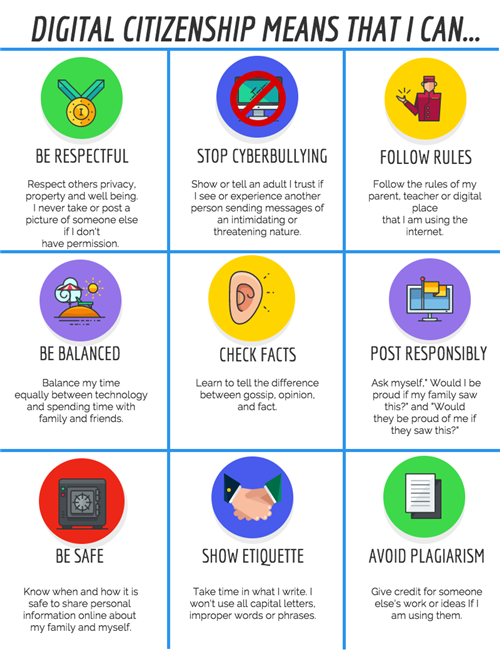To Think About : Is there more to Digital Citizenship than we have been taught?
For many in the year of 2020, education has a responsibility to teach citizenship in many forms. The qualities of the 21st Century Classroom encourage collaboration, critical thinking, communication, problem solving, as well as the integration of technology, and more. These are tied directly to global and digital citizenship. Moving forward, educational institutions, as well as innovating educators need to take the time to examine whether their definitions of digital citizenship may be outdated and need to be redefined.
Below you will find an image link to Anne Collier's TedTalk Video
where she discusses some of the more indepth defininitons of Digital Literacy
Basic Digital Citizenship Tools and Resources
Click on each image below to find link to its source
Click the image to link to the Edutech Blog where this was found
Student Friendly Digital Citizenship Video Links
Click on the image for each to connect to the video link
Resources
SK


